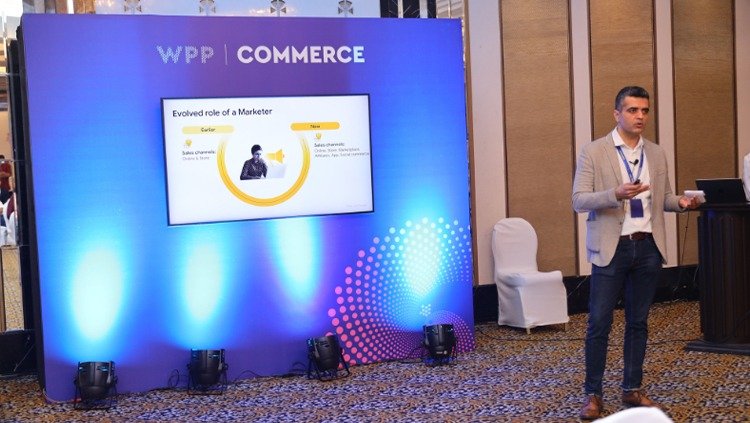GauravJuneja and MeghnaBahadur discuss how Google is assisting brands in connecting with customers across touchpoints
The two presented their ideas at WPP Commerce on how brands may give consumers omnichannel experiences.

Google's head of digitisationGauravJuneja and search specialist MeghnaBahadur discussed the future of Omni-commerce at WPP Commerce 2022.
The two discussed how Google localizes advertising material via its products, offering businesses the opportunity to develop full-funnel marketing options.
The first stop on the omnichannel trip is Google Search:
Juneja began by stating, "Google and YouTube searches are the businesses' intent-loaded customer platform. An efficient omnichannel experience is already being provided to customers by a brand the moment it has a strong online presence."
He revealed that based on their knowledge of the customer, search provides consumers with a pathway to make an offline or online purchase.
Junja continued, "The consumer is given a list of products and is pointed to an offline store or an online platform using the product tag. Brands get both organic and inorganic touchpoints from this ad inventory structure. All of this may be found on Google's first page, and the search engine adjusts its results based on the user."
Consumers may access both organic and non-organic postings as well as video material from a company directly from the search results page, according to Juneja.
The goal is to provide the customer with a wide range of options right on the search page, he stated.
According to Bahadur, omnichannel marketing for brands could be a challenging process, but Google wants to make it easier.
She revealed, "We hope to assist brands in establishing a framework for an omnichannel experience with Google Merchant Center, Google Business Profile, and Google Messaging. Additionally, this enables businesses to link their online and physical storefronts to automatically drive media."
Bahadur outlined the various touch points that firms can use to market to their target market "A customer might be everywhere these days. A person can shop for a brand offline after conducting an online search for it, and vice versa. It's crucial for brands to communicate with customers along the way and to make sure they are present both online and offline."
A brand's Google Business Profile serves as a virtual shop once it is created. Bahadur clarified: "Before visiting the brand's website or physical store, it is the first touch point a customer will see. The consumer will have a smooth interaction with the brand after browsing its profile thanks to this."
As in the case of a buyer looking for "a laptop near me." A search result will appear stating that a Dell store is 1.2 kilometres away and providing the customer with the store's business profile for assessment.
"A brand can employ ad tags on their business profile to optimise the consumer's search results and also gather data on the foot traffic the store received to go a step forward in this consumer journey," said Bahadur.
Brands must upload more offline goods online in order to increase product sales. Consumers will be much more motivated to visit a brand's store if they are aware of the things it carries, according to Bahadur.
For this, Bahadur recommended that businesses construct a Google Merchant Center profile so they may have a useful touch point.
She stated: "Through this, businesses can online-ize their offline merchandise and attract customers to their physical locations. These ad inventories assist organizations in controlling the type of messaging they want to convey to prospective customers as well as being top-of-mind."
planningomnichannel creative
"Use local inventory advertising that will appeal to both online and offline shoppers when designing creatives for the omnichannel journey. When planning the budget for spots, evaluate the effectiveness of both offline and online marketing initiatives, according to Juneja.
Obstacles in the way of omnichannel travel
The customer has an omnichannel journey, Juneja concluded. But are organizations set up to follow that procedure? These omnichannel methods won't succeed if the sales and marketing teams are operating as separate silos online and offline. Starting with team planning, these strategies' alignment should be established. Prioritize omnichannel touch points before beginning brand promotion. Finally, speak with the client directly.












